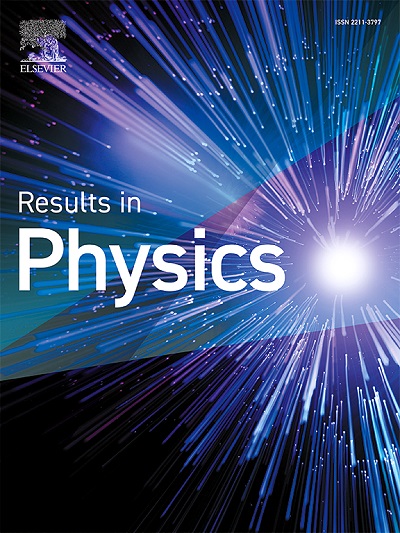Exploring Anharmonicity-induced high thermoelectric performance in α-In2X3 (X=S, Se) monolayers
IF 4.4
2区 物理与天体物理
Q2 MATERIALS SCIENCE, MULTIDISCIPLINARY
引用次数: 0
Abstract
The growing interest in thermoelectric materials stems from their capability to convert thermal energy into electrical power, addressing critical challenges in sustainable energy generation and utilization. While maximizing the Seebeck coefficient is crucial, this can be achieved not solely by focusing on electrical conductivity, but rather through the reduction of lattice thermal conductivity (), which is influenced by material anharmonicity. This ab initio study, based on density functional theory, investigates the thermoelectric properties of -InS and -InSe monolayers, through a detailed analysis of phonon modes, revealing that these materials exhibit low group velocities in acoustic (ZA, TA, LA) and optical modes, short phonon lifetimes, and high Grüneisen parameters, suggesting strong anharmonicity, especially at low frequencies. At room temperature, significantly low values of 1.90 W m−1 K−1 and 0.56 W m−1 K−1 are predicted for -InS and -InSe, respectively, highlighting their potential for thermoelectric applications. Low-frequency optical modes play a dominant role in the total lattice thermal conductivity, contributing 41.54% and 36.78% in -InS and -InSe, respectively. This results in dimensionless figures of merit () reaching 1.12 and 2.30 at 900 K for -InS and -InSe, respectively, under -type doping, underscoring the viability of these materials for efficient -type and -type thermoelectric devices. These findings not only advance our understanding of anharmonicity-induced thermoelectric performance in 2D materials but also pave the way for the design of more efficient energy conversion devices, potentially contributing to future energy policies focused on sustainable and clean energy technologies.

求助全文
约1分钟内获得全文
求助全文
来源期刊

Results in Physics
MATERIALS SCIENCE, MULTIDISCIPLINARYPHYSIC-PHYSICS, MULTIDISCIPLINARY
CiteScore
8.70
自引率
9.40%
发文量
754
审稿时长
50 days
期刊介绍:
Results in Physics is an open access journal offering authors the opportunity to publish in all fundamental and interdisciplinary areas of physics, materials science, and applied physics. Papers of a theoretical, computational, and experimental nature are all welcome. Results in Physics accepts papers that are scientifically sound, technically correct and provide valuable new knowledge to the physics community. Topics such as three-dimensional flow and magnetohydrodynamics are not within the scope of Results in Physics.
Results in Physics welcomes three types of papers:
1. Full research papers
2. Microarticles: very short papers, no longer than two pages. They may consist of a single, but well-described piece of information, such as:
- Data and/or a plot plus a description
- Description of a new method or instrumentation
- Negative results
- Concept or design study
3. Letters to the Editor: Letters discussing a recent article published in Results in Physics are welcome. These are objective, constructive, or educational critiques of papers published in Results in Physics. Accepted letters will be sent to the author of the original paper for a response. Each letter and response is published together. Letters should be received within 8 weeks of the article''s publication. They should not exceed 750 words of text and 10 references.
 求助内容:
求助内容: 应助结果提醒方式:
应助结果提醒方式:


